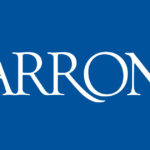Total assets under management with RIAs is hard to pinpoint.
But all can agree it is substantial enough that more and more firms are newly deploying or expanding their RIA sales teams.
But are they employing industry best practices in order to succeed?
Dennis Gallant, President of GDC Research, is an industry expert with over 25 years of diverse experience in market research, competitive analysis, tactical and strategic planning, business development, market validation for asset managers, insurance firms, broker-dealers, banks, clearing firms, and custodians, as well as various third party service and technology providers and is highly skilled in conducting in-depth interviews and surveys with key industry executives, experts, and financial advisors across all channels.
GDC publishes numerous reports and white papers on various topics such as advisory trends, wealth management, portfolio construction, wholesaling, and financial advisor trends. Dennis has also written several recent studies on retirement income covering trends of consumers nearing and in retirement including consumer needs and challenges, identifying current industry efforts and advisor practices.
RIA Wholesaling Best Practices: A Qualitative Approach to Effective Distribution
Since the early 1990’s, the Retail Registered Investment Advisor (RIA) channel has made a significant impact on the marketplace and served as a bellwether for trends including advisory services, wealth management, and the shift to a fiduciary standard. The RIA market manages an estimated $1.2 to 2.5 trillion in assets and represents anywhere from 13,000 to 16,000 RIAs, depending on how the market is segmented and has garnered the attention Asset Managers, Product Providers, Custodians, and most recently FinTech providers. While the RIA market is a growing opportunity, it can be a challenging marketplace to access and requires a distinct and differentiated effort.
This is not a new effort, RIA Wholesaling is a well-established distribution channel comprised of experienced and knowledgeable Sales Executives and Wholesalers, many with 15 to 20 years distributing through the RIA market. It’s also well known that the RIA market is unique and different compared to traditional advisor channels, it’s fragmented and decentralized with no comparable access point like with broker-dealers, and RIA practices seem to vary from firm-to-firm. The RIA market is also known for being resistant to traditional sales and wholesaling methods attributed to their positioning as money managers and fiduciaries. In fact, few in the industry like to use the word wholesaling, and thus Asset Managers and Product Providers often refer to their sales team as consultants, relationship managers, or investment specialists.
However, despite these known facts and seasoned efforts, most RIAs only have moderate levels satisfaction with Asset Manager/Product Provider sales and support. According to GDC Research, just over half of RIA’s surveyed believed that asset managers and product providers via the wholesaling teams understood their practice and their approach to managing assets, which leaves the industry with plenty of room for improvement, as well as opportunity for firms that can enhance the effectiveness of their RIA distribution strategy.
To better understanding the various methods and success factors used by Asset Managers and Product Providers in delivering RIA wholesaling and distribution support, GDC Research employ qualitative approach conducting in-depth interviews with Wholesalers, National Sales Managers, Key Accounts, RIA Custodians, and related industry vendors and experts, as well as an online survey and interviews with a variety of RIA practices to understand their perspectives on wholesaling and distribution support.
While distribution efforts by Asset Managers and Product Providers vary in size and focus, they all contain some common elements and best practices. RIA distribution and wholesaling best practices are derived from in-depth interviews with asset managers, product providers, and industry experts, however, few if any firms incorporate all of the following best practices and many fall short in their execution.
The RIA market is different and unique compared to traditional broker-dealer channels despite the blur as the adoption of advisory and managed account offerings such as Rep as Portfolio Manager offered through traditional broker-dealers continues to expand. Firms also need to be committed to the marketplace.
It’s also important to demonstrate a commitment to the RIA market. RIAs are often wary of firms, especially new entrants, who have not committed or dedicated resources for support or don’t sponsor or participate in RIA conferences/events. Firms that have too many fits and starts in this market risk undermining trust with the RIAs and will likely be reluctant to use that firm’s solutions. Having realistic expectations is directly tied to understand that the sales cycle is very different for the RIA marketplace and much longer than traditional advisor channels often taking 14 months and 3 years to develop. RIAs are institutional-like in how they manage assets and many are formalizing their investment management process with a CIO, analyst, and committees mirroring efforts of institutional investment consultants. As a result, wholesaling sales team needs to be competent in discussing investment management and portfolio construction and have greater access to Investment Analyst and Portfolio Managers. Providing competitive insights is a top best practice and key differentiator. It is important for Asset Managers and Product Providers to understanding the competing product and investment solutions used by their current and prospective RIA clients.
Getting in front of or access to RIAs is a significant challenge and requires firms to pursue collaborative efforts to gain exposure and introductions with RIAs Efforts range from sponsoring regional RIA custodian conferences and workshops to collaborating with other Wholesalers from other firms to co-host informal local events or dinners with RIAs.
Most firms struggle with CRM adoption, tracking points of contact, and level of responsiveness. All firms have developed an RIA databases and leverage CRM capabilities, but struggle with cleaning update the data, the gather of information in the field, and adoption and use of CRM tools by the wholesaling team. In addition, few firms are tracking and analyzing the sequence of activity (touchpoints) in the pursuit of gathering additional information to understand key drivers behind each point of contact. Lastly, the ability to quickly respond to an RIA’s inquiry or follow-up from a touchpoint is becoming one of the most critical success factors and means of differentiation. RIAs have to disseminate through an overwhelming amount of information on a daily basis. If Wholesaler follow-up takes too long the RIA’s interest and the potential opportunity is lost in the information stream.
Half of RIAs surveyed stated that the level of wholesaling and sales activity has been increasing over the past couple of years, with nearly 15% seeing a significant increase and growth is expected to accelerate moving forward. With more and more firms targeting RIAs, Asset Managers and Product Providers will need to refine and develop a more effective RIA distribution strategy to identify the opportunities on what RIAs to target and where and how best to obtain access, build rapport, and add value.
Written by Dennis Gallant



 Great Wholesaling vs. Just OK Wholesaling: Wholesaler Tech Talk with Barry Mandinach
Great Wholesaling vs. Just OK Wholesaling: Wholesaler Tech Talk with Barry Mandinach On My Mind: When Untouchables Become Touchable – Nothing But Good News Episode
On My Mind: When Untouchables Become Touchable – Nothing But Good News Episode A Barron’s Top 100 Advisor Speaks About Wholesalers with Erin Botsford
A Barron’s Top 100 Advisor Speaks About Wholesalers with Erin Botsford The Rewards of Thinking Big and Being Relentless with Jeffrey Hayzlett
The Rewards of Thinking Big and Being Relentless with Jeffrey Hayzlett 33 Technology Ideas Wholesalers Can Use to Improve Their Practice: Wholesaler Tech Talk with Austin Young
33 Technology Ideas Wholesalers Can Use to Improve Their Practice: Wholesaler Tech Talk with Austin Young